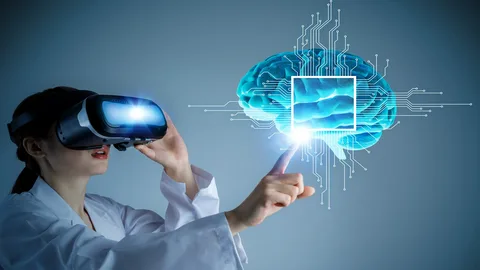Table of Contents
ToggleIntroduction
Brain imaging techniques have revolutionized our understanding of the brain’s structure and function. By allowing scientists and physicians to visualize and track changes within the living brain, these tools offer an invaluable glimpse into the complex organ that orchestrates our thoughts, behaviors, and emotions. The advent of sophisticated imaging technologies has not only propelled neuroscience research but also improved diagnostic and therapeutic methods for brain-related conditions. In this article, we will explore the various brain imaging techniques that have made it possible to peer into the human brain’s inner workings without ever making an incision.

Brain and Emotions
Emotions are complex psychological states that influence human behavior and perception. They encompass a range of feelings, thoughts, and physiological responses that arise in reaction to stimuli or memories. Serving as a vital part of human survival, emotions drive countless decisions and actions, shaping social interactions and personal identities. Understanding the connection between emotions and brain function is crucial, as it underpins much of human psychology and behavior. Emotions are processed by an intricate network within our brain, dictating responses that can range from fight-or-flight to deep empathy and cooperation.
The Brain’s Emotional Centers
The limbic system is the cornerstone of emotional processing in the brain. It includes key structures such as the amygdala, the hippocampus, and the prefrontal cortex. The amygdala, often referred to as the emotional hub of the brain, is primarily associated with the processing of fear and pleasure signals. It plays a pivotal role in how we respond to threats and rewards, influencing our ability to form and retrieve emotion-laden memories.
The hippocampus is integral for consolidating information from short-term to long-term memory and helps contextualize emotions. Lastly, the prefrontal cortex is involved in the regulation of complex emotions, decision-making, and moderating social behavior. Together, these areas contribute significantly to how we experience, interpret, and express our emotions.
Brain Imaging Techniques
Brain imaging techniques are crucial tools used to understand and visualize the structure and functioning of the brain. Each technique offers unique insights and has specific applications in neuroscience, research, and clinical practice.
Types of Brain Imaging Techniques
Functional Magnetic Resonance Imaging: fMRI measures brain activity by detecting changes in blood flow. When an area of the brain is more active, it consumes more oxygen, and to meet this increased demand, blood flow to the active area rises. fMRI can thus provide both an anatomical and a functional view of the brain.
Positron Emission Tomography: PET involves the use of radioactive tracer substances to visualize how tissues and organs in the body function. In the brain, PET can be used to detect the metabolism of glucose, thereby providing details about the brain’s metabolic activity.
Electroencephalography: EEG is a technique that records the electrical activity of the brain via electrodes placed on the scalp. It is commonly used to diagnose epilepsy and other brain disorders, as well as to study brain activities related to mental tasks.
Magnetoencephalography: MEG measures the magnetic fields produced by neural activity in the brain. It provides precise timing information and helps pinpoint the source of the activity with high temporal resolution, which is very useful in researching cognitive processes and planning surgeries for epilepsy.
Near-Infrared Spectroscopy: NIRS is a non-invasive imaging method that uses near-infrared light to assess cerebral blood flow and oxygenation levels. It’s particularly useful for studying brain function in infants and other populations where traditional fMRI can be challenging.
Peeking Inside the Brain for Emotions
Understanding emotions through the brain’s activity patterns is a remarkable area of scientific inquiry that has taken leaps forward thanks to advanced brain imaging techniques. These technologies are allowing researchers to unravel the neurological substrates of emotions, providing fascinating insights into how different aspects of emotional responses are coordinated by the brain. By correlating observed behaviors with brain activity, scientists can construct a more nuanced picture of the emotional life of the brain.
Recent Research Findings
The interplay between emotions and brain activity has been illuminated through various case studies and research initiatives. For example, fMRI studies have shown distinct patterns of brain activity in response to emotionally charged stimuli, such as images or words linked to personal trauma or happiness. PET scans, on the other hand, have been used to measure neurotransmitter systems’ roles in mood disorders, offering insights into the neurochemical basis of emotions.
Comparative Analysis of Techniques
Each brain imaging technique has its strengths and weaknesses in emotional research. fMRI offers excellent spatial resolution and the ability to track brain regions involved in emotional processes, but it is limited by its indirect measurement of neural activity via blood flow. PET provides crucial metabolic information but exposes subjects to low doses of radiation and offers less spatial resolution than fMRI. EEG and MEG, with their superior temporal resolution, excel in tracking the rapid unfolding of emotional processes but are less effective in localizing the exact regions of activity within the brain.
Innovative Approaches in Brain Imaging for Emotions
As the field progresses, researchers are continually seeking innovative ways to improve the resolution and reliability of brain imaging for emotional processing. Techniques such as real-time fMRI provide immediate feedback to subjects, allowing them to potentially modify their emotional responses, which has implications for therapeutic interventions.
Additionally, multimodal imaging approaches are emerging, where the combination of techniques, such as fMRI with EEG or MEG, can leverage the strengths of each to provide richer data about emotional processing in the brain. New developments emphasize the potential for personalized medicine where brain imaging could help tailor treatments for emotional and mood disorders custom-fit to the individual’s neurobiology. Future research directions point towards enhancing the non-invasiveness and accessibility of these techniques, broadening their application across diverse populations and settings.
Practical Applications of Brain Imaging Techniques
The insights gathered from brain imaging studies in understanding emotions have practical applications across a variety of sectors. In psychological therapies, for instance, brain imaging can help in the diagnosis and treatment of mental health conditions by identifying the neural correlates of emotional disorders. Marketers might use this data to better understand consumer behavior and tailor advertising to invoke specific emotional responses more effectively. In the educational sphere, understanding emotional patterns could lead to strategies that improve learning by incorporating emotional regulation techniques.

Ethical Considerations
However, these advancements come with significant ethical considerations. Privacy concerns arise when handling the intimate details of one’s neural responses to stimuli. There is also the potential for these findings to be used in predicting emotions, which could lead to contentious applications such as preemptive crime fighting or influencing voting behavior. Moreover, the possibility of manipulating emotions through targeted interventions underscores the importance of establishing ethical guidelines to prevent abuse of this powerful knowledge.
The future applications and implications of brain imaging for emotional investigation will likely continue expanding, making it imperative to balance innovation with a strong ethical framework that protects individual rights and societal values.
FAQs
What is the main purpose of brain imaging techniques?
The main purpose of brain imaging techniques is to visualize and analyze the structure and functioning of the brain, aiding in diagnosis and enabling research into brain activities related to various cognitive processes and emotional states.
How do different brain imaging techniques compare in terms of safety?
Techniques such as fMRI and NIRS are considered non-invasive and do not expose patients to radiation, making them safer options. However, PET scans involve low doses of radiation, and while generally safe, they are used more judiciously.
Can brain imaging techniques read my thoughts or emotions?
While these techniques can identify patterns of brain activity correlated with certain thoughts or emotions, they cannot literally “read” thoughts or emotions. The interpretation of these patterns requires context and is a complex process.
Conclusion
Advancements in brain imaging techniques have significantly enhanced our understanding of the intricate workings of the human brain, particularly concerning emotional processes. The various imaging modalities available today each contribute unique perspectives, shedding light on the structure, function, and temporal dynamics of emotional responses within the cerebral landscape. As we continue to delve deeper into the neurological bases of emotions, the potential applications in healthcare, marketing, and education expand.
However, as we stand on the cusp of these innovative breakthroughs, the imperative for ethical vigilance grows stronger. We must harness the power of brain imaging responsibly, ensuring that as we peek inside the brain, we do so with respect for the privacy and autonomy of the individuals to whom these marvels of neurology belong.




















